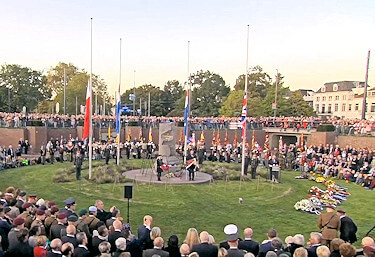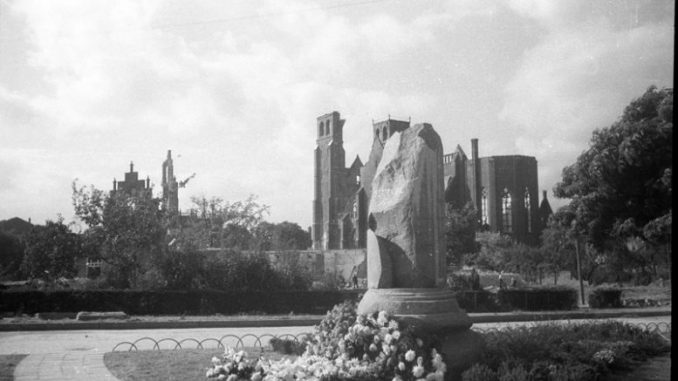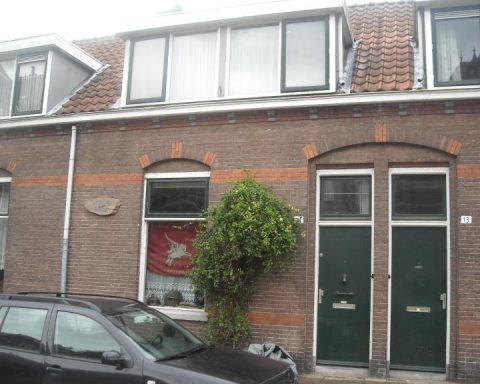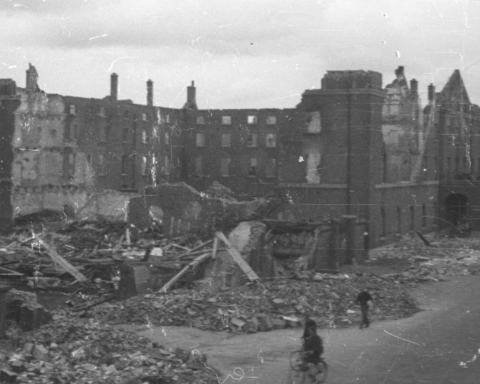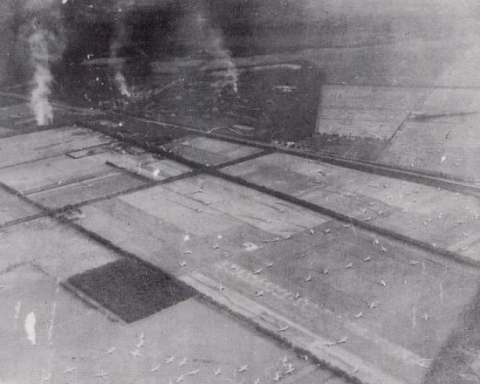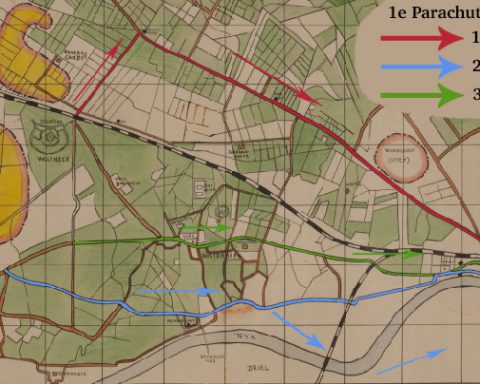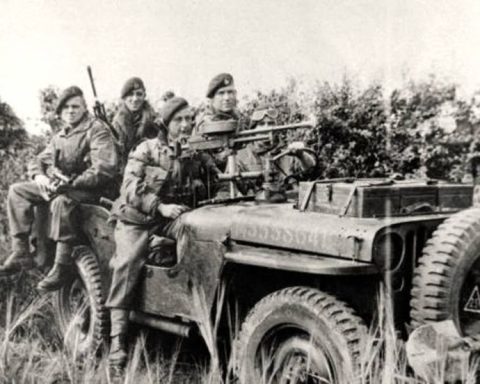Few people know it, but the Airborne monument near the Rhine Bridge in Arnhem is actually a temporary monument. The final monument was to be placed on the main square in the city center. This monument was designed and realized, but it was never used as the ‘official’ Airborne Monument.
What happened:
After the liberation in 1945, people from Arnhem returned to a city thaat was completely destroyed. The bridge, the Eusebius church, the city center: the destruction was enormous. In addition, the Germans had plundered Arnhem during the evacuation of the city after the Battle of Arnhem.
The first commemoration of the Battle of Arnhem took place on September 17, 1945 in this ruined city that still had to survive without water and electricity.
Palace of Justice
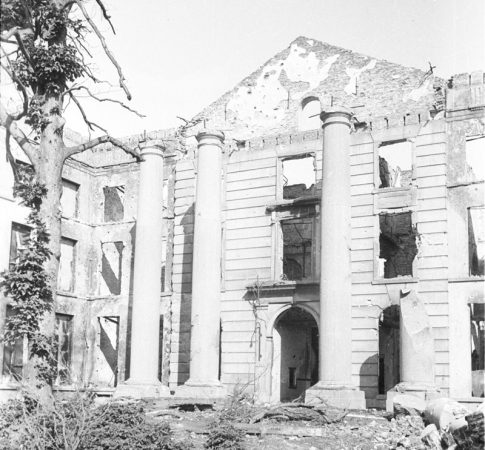
The city council, led by Mayor Matser, had asked the well-known Arnhem sculptor Gijs Jacobs van den Hof to design a temporary monument for the first commemoration after the war.
Municipal architect Johannes van Biesen had proposed to use a broken column of the Palace of Justice in the city center as a symbol for the monument.
The Palace of Justice on Arnhem Market was completely destroyed during the bombing after the Battle of Arnhem. The rightmost column of the four columns at the entrance was broken off.
Gijs Jacobs van den Hof placed this column on a pedestal and provided the column with a simple inscription: “September 17, 1944”.
Location
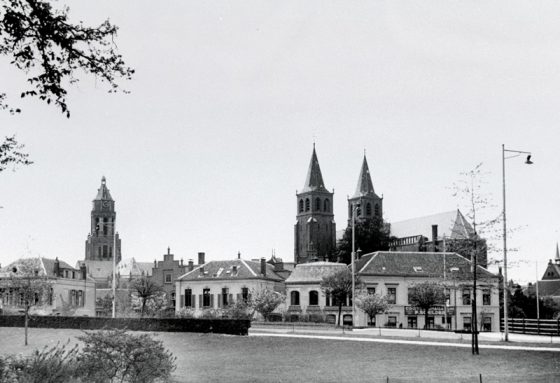
The photo above shows the place where the airborne monument now stands. The photo above was taken in 1942. Two years later, the center of Arnhem looked different forever.
This location was chosen for the placement of the temporary memorial monument because the British had fought here.
The memorial pillar was placed on the site of a small bomb crater between the Lauwersgracht and the driveway of the destroyed Rhine bridge. In this way, the column became a symbol of the hard struggle that the British had fought a year earlier in an attempt to secure the bridge over the Rhine for the Allies.
Disclosure on September 17, 1945
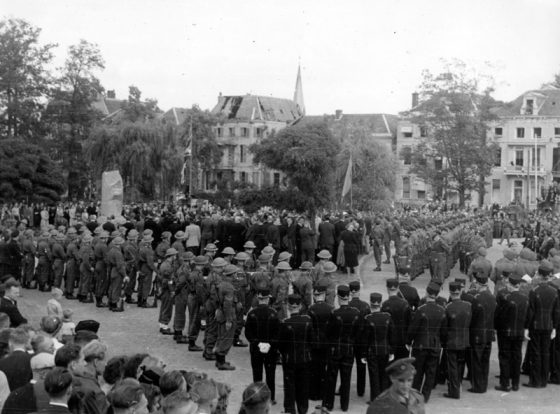
The temporary monument was unveiled on September 17 1945 by Commissioner of the Queen Schelto Baron van Heemstra and the British General Roy Urquhart, who had been commander of the British airborne troops. Colonel John Frost was also present at the unveiling of the monument.
Moreover, the commemoration was attended by many British and Canadian troops who were still stationed in Arnhem.
British, Polish and Dutch armed forces organized a military parade.
The roundabout (‘de Berekuil’) had not yet been constructed at that time. Arnhem was still in the process of clearing rubble. Plans for the future only came later.
Temporary monument becomes permanent
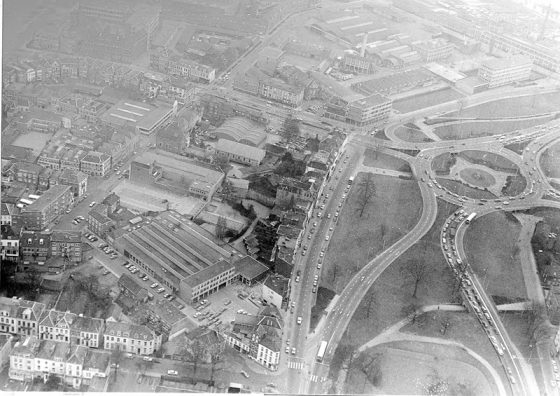
In 1949, the Arnhem Airborne Committee commissioned sculptor Jacobs van den Hof to design a new, permanent war memorial.
The new memorial to commemorate the Battle of Arnhem would be prominently placed on the main square in the city center. The old monument at the northern bridge ramp could disappear, according to the Arnhem Airborne Committee.
Jacobs van den Hof went to work and completed the new monument a few years later. The monument was placed on the square, however this monument never received the status of definitive memorial monument to commemorate the battle of Arnhem.
The sculpture on the square was unveiled on September 17, 1953 by Queen Juliana at the ninth commemoration of the Battle of Arnhem.
But it was now clear that the people of Arnhem actually did not want to get rid of the monument that had been placed as a temporary memorial monument a few years earlier.
Moreover, the monument fitted perfectly into the plans that the municipality of Arnhem already had with the surroundings of the northern bridge ramp.
Construction of the Dam circuit was started here in 1952. The Airborne monument formed the heart of the roundabout built here. The annual commemorations of the Battle of Arnhem still take place here.
